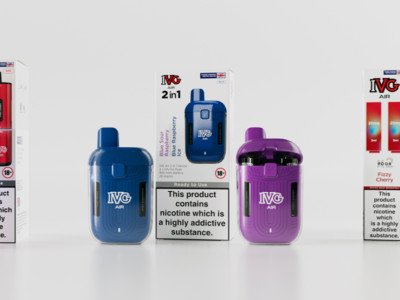“Advertisements featuring e-cigarettes with flavours such as chocolate and bubble gum are more likely to attract school children to buy and try e-cigarettes than those featuring non-flavoured e-cigarettes,” is the lead comment according to the University. For parents who would rather their children stay clear of nicotine and anti-ecig public health officials this was just what they wanted to hear. But then the questions are: where are these adverts and how are children seeing them?
In the follow-up comment, lead researcher Milica Vasiljevic said: “We’re cautiously optimistic from our results that e-cigarette ads don’t make tobacco smoking more attractive, but we’re concerned that ads for e-cigarettes with flavours that might appeal to school children could encourage them to try the products.”
Cautiously optimistic, but not enough to prevent them stating: “As e-cigarette use rises amongst children and adolescents, there are concerns that their use could lead to tobacco smoking.” It’s a confused and mixed message, one rooted in the fact that tobacco companies used to market candy and alcohol smoking products directly at children. Public health lives in fear of this being repeated with vaping and explains why they are so fixated on a problem that doesn’t exist.
598 school children were split into three groups: one shown adverts for candy-like flavoured e-cigarettes; a second shown adverts for non-flavoured e-cigarettes; and a third, control group, that saw no adverts. The students were then asked about the appeal of vaping, how cool and fun it looked and whether or not they’d be inclined to buy an ecig.
Again, the questions have to be posed: where are these adverts and how are children seeing them? If a study is claiming children view these ads then for the study to have validity it must focus on the kinds of things they would genuinely come across. The adverts used come from a repository held by Stanford School of Medicine. Instantly, it is possible to see that almost all of these adverts are all being taken out of context. Children do not buy Vape Magazine, for example – it is only available in the UK by mail order and does not appear in any newsagent. There are no vape magazines available for general sale in the UK, the other two have to be collected from select vape shops. Other adverts are from online sources, again aimed at vapers. Some anonymous person classified these adverts – for example, making the decision that the featured Njoy advert directly targets teens!
Totally unsurprisingly, “The children shown the ads for candy-flavoured e-cigarettes liked these ads more and expressed a greater interest in buying and trying e-cigarettes.” The rules for advertising, they say, “do not provide any explicit prohibitions regarding the advertising of candy-like flavours designed to appeal to children.” But, as any vaper would scream, these adverts are not targeting teens – they are selling products to adults who quit smoking and want to glory in their rediscovered sense of taste. It is an utter nonsense to claim otherwise.
Cliff Douglas, director of the American Cancer Society Tobacco Control Center, is incensed: "It doesn't get much more blatant, it's quite clearly targeted at kids." Erika Sward, assistant vice president of national advocacy for the American Lung Association explained the logic: “Kids like sweet flavors. That is why there are sugar-sweetened cereals. These flavors have always appealed to a kid's palate.” So there we go, kids like sweet things therefore anything sweet must be aimed at children. By the same token, someone ought to clamp down on the advertising of luxury boxes of chocolates and mini sweetcorn.
But there are voices of dissent.
“These are mom and pop shops, no company has more than two percent of the entire market. There is no cabal trying to lure kids in. If there is an attempt to create one, they are doing a terrible job – let’s face it, ‘e-cigarette’ is the worst possible name for a product,” writes ACSH. “No one wants kids using e-cigarettes or smoking tobacco, but the evidence is clear that e-cigarettes have reduced smoking overall, so we risk making the perfect the enemy of the good advocating sweeping bans – and survey results are a terrible source of data.”
They go on to debunk the entire notion that advertising is responsible for demand: “If the link between advertising and use were truly causational, there would be no cigarette smoking among kids by now, yet there still is. Advertising didn’t make e-cigarettes popular any more than ads made singer Tori Kelly successful. If anything, the counter-culture aspect of e-cigarettes would be harmed by advertising, especially the kind that the CDC seems worried about.”
It raises another question: if ecigs are so bad and clearly being targeted at youth, what is going on with energy and caffeinated drinks? With an evidenced danger being presented to the public the public health lobby appears content to let these products slide. Maybe we are back to that thing of vaping being demonized for nothing more than it looks like smoking.
Science 2.0 damns the researchers: With no evidence of risk existing, “the University of Cambridge creates a slippery slope, using old tobacco industry 1970s-era documents finding that young smokers liked flavored cigarettes and implying that flavors in e-cigarettes would cause smoking.”
None of this washes with New York’s money man Scott Stringer: “The same companies that peddled ‘Joe Camel’ and similar, kid-friendly images to an earlier generation are back with new ad strategies that appear to target e-cigarettes just as explicitly toward children and teens, with little or no regard for any potential health impacts.” Did Scott look at the adverts? Does he realise that only a tiny fraction of them are produced by tobacco companies?
It takes the wonderful Linda Bauld to put things into context: “However, overall the young people in this study still had negative views about both appeal and purchase. We can’t assume, therefore, that advertisements of flavoured e-cigarettes will result in young people trying to buy these products.”
To which Professor Kevin Fenton, Public Health England, added: “It’s important we recognise that flavoured e-cigarettes can appeal to adults as an alternative to smoking. In the UK we see very little evidence of E-cigarette use among children who haven’t previously smoked and this is partly due to the tight controls we already.”
If these adverts are targeting children and if adverts lead to vaping – then the one conclusion we can draw if that all of the advertising agencies aren’t up to the job. Smoking has declined as vaping has risen while we have witnessed no significant take up of vaping by non-smoking teens. The advertising devil some would see has been toothless and an unmitigated failure at roping kids into a life of nicotine use.
Dave Cross
Journalist at POTVDave is a freelance writer; with articles on music, motorbikes, football, pop-science, vaping and tobacco harm reduction in Sounds, Melody Maker, UBG, AWoL, Bike, When Saturday Comes, Vape News Magazine, and syndicated across the Johnston Press group. He was published in an anthology of “Greatest Football Writing”, but still believes this was a mistake. Dave contributes sketches to comedy shows and used to co-host a radio sketch show. He’s worked with numerous vape companies to develop content for their websites.
Join the discussion
Be Vape Vigilant Success
The ‘Be Vape Vigilant’ national initiative has exposed more than 100 potential rogue vape traders says the UK Vaping Industry Association
The COP10 Scorecard
Dr Derek Yach and Tobacco Harm Reduction.net have released a COP10 Scorecard report, drawing upon recent World Health Organization (WHO) reports to assess progress made by Parties to the Framework Convention on Tobacco Control (FCTC)
A Manifesto for Smokefree Beginnings
The Smoking in Pregnancy Challenge Group has produced its fourth national report: “A Manifesto for Smokefree Beginnings”
European Parliament Endorses Smoking Cessation Tool
The European Parliament has endorsed vaping as a smoking cessation tool via its Subcommittee on Public Health, according to the World Vapers’ Alliance












